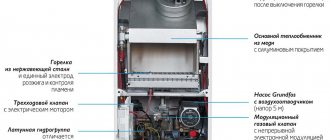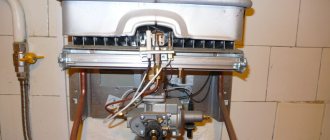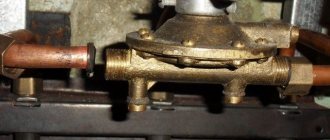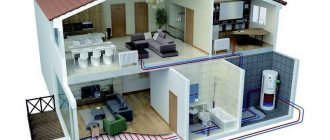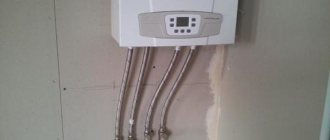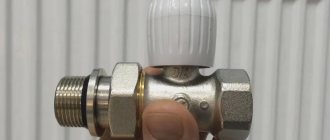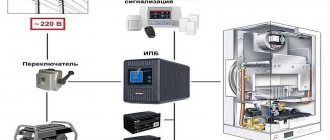As soon as it gets cold outside and the temperature drops to low, it’s time to start the heating season. In order for the population to be warm and comfortable, careful and professional preparation for this season is necessary, which must begin in advance. Preliminary preparation of all thermal facilities according to the drawn up plan so that they can function successfully during the onset of cold weather. The main thing is that the plan of prepared activities meets all established standards, rules and conditions for the implementation of the heating season, as well as the recommendations of the relevant authorities.
What is discussed in the order on preparation for the heating season?
The first step in the process of preparing thermal facilities should be an order that must be issued. The person who will be responsible for the operation of thermal power plants and his deputy are registered here. There are certain requirements for the responsible persons of these organizations, one of the main ones is the presence of a higher heat and power education. And in the future, every year they must pass knowledge tests, which consist of passing an examination.
The order must also include the following fundamental points:
- Formation of commissions in order to prepare the heating system for operation during the autumn-winter period (AWP) and accept this facility, which is on the balance sheet of the enterprise.
- The choice of persons who will become responsible, as well as the numbers of final dates for all parts of the order.
- Drawing up and coordination of an autumn-winter action plan (AWM) in order to prepare the necessary equipment.
- Monitoring and control of preparatory activities, as well as preparation of reports on them.
- The procedure for testing and setting up heating systems.
- Approval of equipment readiness for heating, supported by the procedure for obtaining a special act and passport.
The action plan should be formed taking into account the shortcomings in the functioning of thermal equipment over the past period. Heads of districts and managers of private organizations (for example, HOAs, housing cooperatives) must issue such orders and similar instructions every year before the thirtieth of April. Since it is important that everything is prepared in advance, meetings to approve the heating action plan for 2022 were held in 2022.
What should be in the Act
The Report displays the results of the following actions of the personnel responsible for the verification procedure:
- water or air, using special equipment, is pumped into pipelines until a certain pressure is reached;
- the system is carefully inspected, especially the connections of its elements, to detect leaks, as well as other defects that can cause interruptions in the operation of thermal equipment;
- activities carried out to eliminate defects (if any were identified).
The regulations for hydrotesting of thermal installations are prescribed by the standard SP 73.13330.2012 “Internal sanitary systems of buildings.” In accordance with it, test operations are performed as follows:
- The supply of working fluid to the pipelines of the heating system is carried out in stages, with a stepwise increase in pressure, until it reaches the established threshold value. It is recommended to pump coolant at intervals of 10 minutes until all air pockets are released.
- The test pressure, controlled by a pressure gauge, is maintained for at least 10 minutes. The test pressure should be 30-50% higher than the working pressure (depending on the wear of the system), but not higher than the minimum permissible pressure of one of the devices. For example, if the building has cast iron radiators, the pressure should not exceed 6 MPa, if steel radiators 10 MPa.
- If pressure testing is carried out in a residential building, the residents of the house are warned about the work.
- Characteristic indicators of leaks are a sharp drop in the pressure of the working fluid or its gradual decrease by more than 0.2 kg/cm2. As a rule, coolant losses occur at threaded or flanged connections, which must be tightened, repacked, or gaskets replaced. If it is impossible to eliminate the defect, the unit is rejected and replaced.
When does the heating period begin and end?
The start and end dates of the autumn-winter heating period are established by the relevant regulatory documents of local governments. If the street temperature drops to 8 degrees Celsius and lasts for at least five days, then the heating season should start. Accordingly, when the average temperature rises to 8 degrees Celsius, lasting more than five days, the heating season ends. There is Government Resolution No. 307, the second section of which states that the authorized bodies determine the start and end dates for the contractor’s crime for heating work, if the owners and owners of houses, both individual and multi-apartment ones, have not determined the procedure for setting the start and end OZP, and thermal energy is supplied through central heating networks.
Certificate of readiness of heating systems and heating networks sample
Certificate of readiness of heating systems and heating networks of the consumer for operation during the heating period 2014 - 2015.
Settlement "____" _____________20___ We, the undersigned, the Perm Department of EDMTO represented by (position, full name) carried out the acceptance of the building’s heating networks and heating networks
The test and inspection results are as follows:
1. During the hydraulic test, the pressure was raised to the required gf/cm2 according to the instructions. In this case: a) after 15 minutes. After turning off the press, the needle dropped to ____ gf/cm2. b) the specific point of water per 1 m3 of volume did not exceed __________ t/h, m3.
2. When inspecting the system, the following defects: a) in the insulation of buildings b) insulation c) in instruments d) in taps
3. Condition of hatches on external consumer networks
4. Flushing the network and system
The consumer is obliged to eliminate the defects established by this act of readiness of heating systems and heating networks by
Provided that the above defects are eliminated, the system can be allowed to connect to the heating network of the heating supply organization
The defects have been eliminated, the subscriber’s system is complete and is considered accepted since “______” ________________ 20_____.
Representative of the heat supply organization ________________ Representative of the consumer ________________ “______” _______________20____
Incoming search terms:
- act on the technical readiness of heating networks and energy receiving devices of installations (24)
- flushing of heating networks before the start of the heating season, form of act (1)
- act on preparation for the heating season form (1)
- act on preparation for the heating season (1)
- act on readiness for the heating season sample (1)
- act of readiness for the heating season form (1)
- certificate of readiness of the heating system for the heating season sample (1)
- act of readiness of the heating system and heating networks of the consumer for operation during the heating period 2017-2018 (1)
- act of readiness of the facility for the heating season sample (1)
- certificate of facility readiness for the heating season (1)
A selection of the most important documents upon request Heating season
(regulatory legal acts, forms, articles, expert consultations and much more).
Regulations: Heating season
Decree of the Government of the Russian Federation dated May 6, 2011 N 354 (as amended on June 27, 2017) “On the provision of utility services to owners and users of premises in apartment buildings and residential buildings” (together with the “Rules for the provision of utility services to owners and users of premises in apartment buildings and residential buildings houses") 5. If thermal energy for space heating needs is supplied to in-house engineering systems via centralized engineering support networks, then the contractor begins and ends the heating period within the time limits established by the authorized body. The heating period must begin no later than and end no earlier than the day following the end of the 5-day period, during which, respectively, the average daily outside air temperature is below 8 degrees Celsius or the average daily outside air temperature is above 8 degrees Celsius.
Articles, comments, answers to questions: Heating season
Circumstances of the case: During the heating season, an accident occurred on the heating main. It was possible to turn off the heat supply for no more than three hours. In this regard, the customer entered into a contract to eliminate the consequences of this accident with a single contractor. There was no competitive procurement procedure. The antimonopoly authority recognized the customer’s actions as unlawful.
The conclusion is based on the fact that in an emergency situation related to the supply of heat to the house during the heating season, the employee was obliged to provide access to her apartment for repair work. Her absence from work was due to valid reasons.
The document is available: in the commercial version of ConsultantPlus
Document forms: Heating season
Form: Certificate of verification of readiness for the heating period of municipalities (heat supply and heating network organizations, heat consumers whose heat-consuming installations are connected to the heat supply system) (recommended sample)
The document is available: in the commercial version of ConsultantPlus
Form: Passport of readiness for the heating period of a municipality, heat supply organization, heating network organization, thermal energy consumer, in respect of which the readiness for the heating period was checked (recommended sample) (Order of the Ministry of Energy of Russia dated March 12, 2013 N 103)
The document is available: in the commercial version of ConsultantPlus
The article was written based on materials from the sites: pandia.ru, dogovor-obrazets.ru, domvpavlino.ru.
Why is it necessary to prepare for the heating season?
With careful and timely preparation and coordinated operation of housing and communal services facilities, the population can be confident in ensuring a constant energy supply when the temperature drops. For the Russian Federation, established technological heating modes are a priority in the area of growing regional public utilities. By preparing housing and communal services facilities for winter protection, it becomes possible to reduce the influence of temperature or other atmospheric factors on the stability of buildings, prevent their wear and tear, and also protect the operation of necessary equipment from disruptions. The completed preparation of housing and communal services facilities for winter protection can provide the following important aspects:
- rational use of fuel resources and materials;
- high reliability and maximum economy of operation of thermal facilities;
- operation of housing and communal services facilities in accordance with established standards and advanced technologies;
- carrying out an appropriate sanitary and hygienic regime in terms of temperature and humidity in the premises that are acceptable.
Requirements for the preparation of residential buildings
We can highlight a range of fundamental conditions for preparing houses and the engineering systems inside them for the heating season, which are the key to obtaining documents confirming permission to start heating equipment for a specific facility.
The autumn-winter plan includes the following areas:
- Technical inspection of structural elements of houses and structures.
- Repair work to restore heat and power equipment based on the results of the survey in the spring.
- Flushing network pipes with water
- Testing of heating networks using hydraulics.
- Equipping systems with elements and devices that are missing.
- Providing boiler houses with spare energy sources.
- Formation of an act of emergency and technological protection of heat supply.
- Carrying out actions to insulate buildings.
- Issuing and receiving a certificate and passport confirming the readiness of a certain boiler room for the heating season.
The procedure for preparing a house for winter for management companies and owners
Property management companies must also winterize homes. According to Rules No. 103, they:
- eliminate violations in thermal and hydraulic conditions;
- wash equipment and communications;
- develop operating modes;
- check heating networks, house insulation, metering devices and automatic regulators;
- testing the heating networks of the house for strength and density;
- doing scheduled repairs.
How to prepare for the heating season
Heads of institutions and organizations of housing and communal construction are fully responsible for the timely and correct implementation of the plan for autumn-winter activities. The work must be carried out in three stages. The first is preparatory, it consists of studying the results over the past heating period. The next stage, the second stage, involves repair work to restore it until the first of September. At the third stage, a check is made to see how ready the equipment is for the beginning of the heating season, after which all systems are tested for operation; if there are any violations, they must be eliminated by the fifteenth of September. And so every time, from year to year, the cycle repeats itself, that is, preparation for the next heating season should begin on April thirtieth, 2022.
At the local government, the headquarters holds meetings where the reports of those responsible for the implementation of the action plan to prepare for the heating season are reviewed. After all the meetings and checks are completed, an assessment of the implementation of the plan is compiled based on their results, and then the information is communicated to the population without fail.
Shut-off valves
Shut-off valves must perform their main function - block the flow of coolant. If there are valves on the heating unit that do not “hold”, they need to be replaced. Different sections of the system are pressurized under different pressures, and if there is a non-working valve in the circuit, it will definitely manifest itself.
Marking of fittings
Ideally, everything should look like this: at the heating point there should be a diagram showing numbered and marked inlet and outlet pipelines, shut-off and control valves, drainage and drainage devices. The diagram must correspond to the current state of the system, that is, if changes have been made to the system, they must be displayed on the diagram.
All of the above devices must have tags with symbols corresponding to the symbols in the diagram (1,2 - shut-off valves on the supply and discharge pipelines, t1 and t2 - thermometers, P1 and P2 - pressure gauges, etc.).
In practice, at small heating points, inspectors do not always focus on this. The main thing is to make it clear what goes where, for example: “supply to the left wing”, “return from the right wing”, “supply to ventilation”, etc. But if everything goes according to Feng Shui, this is an additional plus.
Inspection of wedge valves
Old-style wedge valves require additional attention during operation.
Wedge valve design: 1 - wedge, 2 - cover, 3 - flywheel, 4 - seat, 5 - body, 6 - o-ring, 7 - spindle, 8 - threaded bushing, 9 - bushing, 10 - stand, 11 - gland flange , 12 — stuffing box made of thermally expanded graphite.
In such valves, it is mandatory to pack the stuffing box every year. And during the year, if a leak occurs from the seal, it is necessary to tighten the flange. If this is not done, the valve will become unusable.
To replace the stuffing box, you need to unscrew the nuts on the union bolts, lift the flange, remove the old stuffing box and install a new one. The seal is wound in rings around the spindle and pressed against the flange.
When tightening the flange, you need to be careful: if you overdo it, the cast iron flange may burst, and replacing it is very problematic; in practice, it is easier to change the valve completely.
There should be no signs of rust on the valve. The body should be painted black, the flywheel red, and the retractable spindle should be lubricated with grease.
How a home property inspection is carried out in the spring
During this inspection, it is necessary to conduct an examination of the technical condition of housing and communal services equipment, the availability of fuel reserves, how reliable is the supply of services to the population, and how the technological modes of functioning of heat transfer were carried out in the past autumn-winter period. During the spring inspection, the following most important areas should be taken into account:
- Inspection of residential buildings, namely engineering structures such as windows, walls, doors, roofing, insulation systems and engineering essences inside the house.
- Generating a report after inspecting the facilities, which will indicate the required types of repair and restoration work, monetary and resource support, persons who are responsible for the execution of the plan, as well as the start and end dates of these works.
- Based on this act, a plan for autumn-winter activities should be drawn up.
- Approval of this plan with local authorities, and then with the head of the organization.
Checking the thermal insulation of a house
Heat can leave a home in a variety of ways:
- 18–20% of heat evaporates through windows and doors;
- using a ventilation system (including chimney) – 15%;
- poorly insulated floor – 10%;
- not insulated or wet walls – 30 – 35%;
- attic floor – 20%.
Therefore, all these sources of heat loss must be carefully checked and, if necessary, insulated. It is easy to insulate windows and doors using either a modern sealant or the old “old-fashioned” methods using cotton wool, newspapers, adhesive tape, and foam rubber.
If you still have old wooden frames with dangling glass, then in the summer you need to replace the glazing beads with new ones, placing them on window putty. This will significantly reduce heat loss through window frames.
Preparing actions based on inspection results
After the spring inspection, it is necessary to draw up organizational measures, which will take into account the starting and ending numbers, when all the deficiencies found will be specifically eliminated:
- it is mandatory to ensure high-quality drainage of natural waters on the territory of the house, blind areas, and basement;
- all structural elements necessary for work in the basement premises must be checked for serviceability;
- all joints and interfaces must be completely isolated from water, they must be free of any cracks, moisture stains, peeling of the protective layer of concrete structures and other problems;
- during an external inspection, it is necessary to ensure the proper condition of the walls, which should not have any cracks, collapsed plaster or insulation;
- when inspecting windows or doors, you need to take into account the serviceability of the frames, external glazing and the full volume of glazing;
- roofs must be provided with the required temperature and moisture conditions;
- ventilation systems must be checked to ensure they are fully capable of removing waste from gas stoves and water heaters;
- monitoring and complete control of the state of thermal insulation of heating systems inside houses.
Communications audit
In the summer, it is necessary to check all the engineering systems of the house:
- heating system;
- ventilation system and chimneys;
- stove or heating boiler;
- water supply system;
- drainage systems;
- power supply system.
Checking the heating system involves a thorough inspection of pipelines and heating devices for leaks and leaks. To do this, it is necessary to carry out a test run of the heating system in advance:
- Fill it with water or other coolant through the drain valve located at the lowest point of the system. Rising upward, the coolant will gradually displace all the air accumulated in the pipelines and squeeze it out through the air vent valves.
- Keep the pipelines filled for at least half an hour, during this time checking the tightness of all connections and heating devices for leaks.
- Using a pressure gauge at the system inlet, you need to make sure that the pressure in the system is stable. If it falls, it is necessary to find places of leakage.
- If there are leaks, the coolant must be drained and all defects in the heating pipeline must be eliminated.
- Then the test is repeated.
- Next, you need to raise the temperature in the system and check how quickly and evenly the devices warm up. If there are problems, they are fixed.
- Then the temperature in the system is gradually reduced.
A passport confirming the facility’s readiness for the heating period
There is a standard sample on the basis of which the passport is made. It is issued by a certain authorized body that forms the commission. Such bodies at housing and communal services facilities include territorial authorities. The issuance of a passport can last for 15 days after the act is issued.
Registration and receipt of the relevant document is carried out only when there is confidence that the object is completely ready for the autumn-winter period, after timely elimination of problems in full. Depending on the distinctive aspects of weather conditions, the authorized body sets time limits for the generation of passports confirming the readiness of objects. For heat supply organizations, this date is set no later than the first of November, and for consumers - no later than the fifteenth of September.
Additional recommendations
To ensure the flow of additional heat from radiators, you can resort to the following tricks:
- do not place furniture in front of them;
- raise or move curtains;
- place a special reflective screen behind the battery, which can be purchased in a store or made with your own hands from foil;
- paint radiators in light colors.
When purchasing heaters, experts advise giving preference to oil heaters, as they are the most efficient and safe.
If you prepare your apartment for the cold in a timely manner, you can be absolutely sure that it will be warm and dry in any weather conditions.
Formation of an act based on the autumn inspection
Following the implementation of repair and restoration work and maintenance of heating networks, the established preparation commission is obliged to conduct an autumn inspection of the measures taken, the reliability and readiness of the facilities for the heating period, before the fifteenth of September. After completing this procedure, those responsible for the implementation of the measures must adjust the repair plans, taking into account all detected problems at heat supply facilities. Such deficiencies must be eliminated without fail by September fifteenth. Then you can begin the procedure for drawing up the necessary acts and obtaining a confirming passport.
Connection to existing heating networks occurs before the first of September, and after the fifteenth of September, before the start of the heating season, tests are carried out, which consist of launching heating supply units. According to information from the relevant Ministry of the Russian Federation, after an inspection of about 950 electric power industry entities in 2022, 83 percent received passports confirming their readiness for the heating period. Activities continue at other sites.
Preventative work for heating units during the inter-heating period
Activities to prepare the heating system in individual heating units:
- preparation with checking for serviceability of check valves, as well as safety valves;
- control of the functioning of thermometers, heat regulators, pressure gauges;
- troubleshooting of various threaded connections;
- checking the performance of shut-off valves;
- washing and cleaning of mud traps and filter surfaces.
During the preparation of residential buildings and buildings for the beginning of the heating season, the serviceability of water metering units is also diagnosed. First, a visual inspection of the condition of the water supply system is carried out, then the components are checked for compliance with the requirements and the presence of defects.
Need detailed advice?
Call us: +7(495) 786-95-15
Work carried out in preparation for the heating season
All actions to restore heating networks must be linked to a plan for repairing the thermal power forces of heat sources. Persons responsible in accordance with the previously mentioned order must draw up appropriate acts and provide data on the volume of repairs made and the results of inspections carried out.
Checking boiler room equipment
In preparation for the period of heating work, it is necessary to carry out the required measures, which include: repair of boiler heating surfaces, replacement of defective parts of pipes, boiler fittings, air heaters and other installations; repairs to restore fans and pumps; repair and restoration work of chemical water treatment facilities, fuel supply and electrical power equipment; as well as preparing furnaces for heating work and checking heat measuring instruments.
Upon completion of all restoration work, thermal circuits of boiler plants are assembled, where equipment is hydrotested with a pressure of 1.25 of the operating pressure of the steam in the boiler.
Repair work
Based on the results of spring inspections, the following types of repairs should be carried out:
- replacement of pipe parts that are in poor condition;
- repair of various pumps, valves, air vents and flaps;
- restoration of thermal insulation and coating that prevents corrosion;
- repair or replacement of valve control mechanisms and starting devices, as well as instruments that carry out control and measurement work;
- cleaning tanks and mud traps;
- setting up security automation.
After the necessary measures have been taken, the thermal circuit is collected and subsequently tested.
How should devices be checked?
There are certain rules according to which any source and receiver of heat must be equipped with commercial metering devices, and boiler rooms and consumer heating equipment must be equipped with elements of a security system.
In order for all devices to work smoothly and reliably during the autumn-winter period, a thorough check should be carried out, and if necessary, repair of the following devices: adjustment of heat loss and temperature; maintaining pressure in heat supply devices; automatic operation of drainage pumps; as well as devices:
- to protect thermal systems from excess pressure or temperature in the supply network or pressure drop;
- to automatically turn on the spare pump and protect the battery tank from overcrowding;
- by pressure in the network pipeline.
Starting pad and mode cards
Flushing and testing of heating networks with hydraulics is followed by commissioning work on thermal power plants for both companies and consumers. After their implementation, operating schedules for this equipment must be established.
The most important data taken into account in the described cards:
- Estimated volumes of coolant for operational sections of the heating network.
- Operating parameters for pressure in network pipelines: forward and return lines.
- Working temperature graph of network water, taking into account air temperature.
- Waste of thermal fluid from consumers.
- Calculation of heating network temperature expansion.
- Analysis of operating modes of the heating network.
- Calculation of the dimensions of limit washers and nozzles of elevator units for the consumer.
Document on readiness for the heating season
Based on the completion of the necessary repair activities included in the plan, deadlines are set for checking the quality and completeness of the scope of all actions, namely how they correspond to the plan.
To assess how prepared consumers are for the heating period, a special commission checks:
- the completeness of the scope of implementation of all plan activities;
- quality of insulation of objects;
- technical condition of pipes and fittings;
- the presence of washing, pressure testing of devices, regime maps and the availability of commissioning tests;
- operability of devices that take into account electricity;
- functioning of security automation;
- availability of supporting necessary passports.
If complete readiness for the start of heating for the autumn-winter period is revealed, then the preparation of an act that complies with all the rules, signed by members of the special commission, begins. This document may be supported by any important notes on troubleshooting, by eliminating which the passport can soon be received by consumers.
Pressure gauges
Perhaps the first thing an inspector turns his attention to when accepting pressure testing is the pressure gauges.
Checking the pressure gauge
Pressure gauges must be verified every year. Verification is a test of a measuring device for accuracy of readings. If the pressure gauge readings exceed the permissible error, it must be sent for calibration or replaced. Calibration, in essence, is the adjustment of a pressure gauge aimed at reducing the error in measurement accuracy.
After verification, a stamp of the Metrological Service is applied to the pressure gauge body.
1. Month of the year (1, 2, 3, etc.), quarter (I, II, III, IV). 2. Gosstandart sign. 3. Last numbers of the year (here 2002). 4. Individual sign of the verifier. 5. Code of the Metrological Service.
New pressure gauges are subject to verification only after 18 months, that is, a year after commissioning. But when checking, you must provide passports for these devices (they are included in the kit).
Pressure gauge connection
The pressure gauge must only be connected through a three-way valve or a ball valve with a pressure release valve. Conventional ball valves do not work.
Three-way valves often leak. Tip: to avoid leaks, rotate the valve stem several times around its axis before installation. This way you will evenly lubricate the stem and the inner surface of the tap with the grease that was applied during assembly.
Where should pressure gauges be located?
Regarding the installation location of pressure gauges, there is a whole bunch of standards (DBN V.2.5-39 - Heating networks, SNiP 2.04.01 - Internal water supply and sewerage of buildings, SNiP 2.04.05 Heating, ventilation and air conditioning, SNiP II-35 Boiler installations). In simple words, I will say this: pressure gauges should be placed before and after any equipment that can affect pressure changes: on all outgoing and passing pipelines, before and after shut-off valves, before and after control equipment, before and after mud traps (to monitor its condition) and etc.
Another nuance that an inspector can pay attention to is the rating of the pressure gauge. Heating points should have pressure gauges with a rating of up to 1.6 MPa (16 bar).

